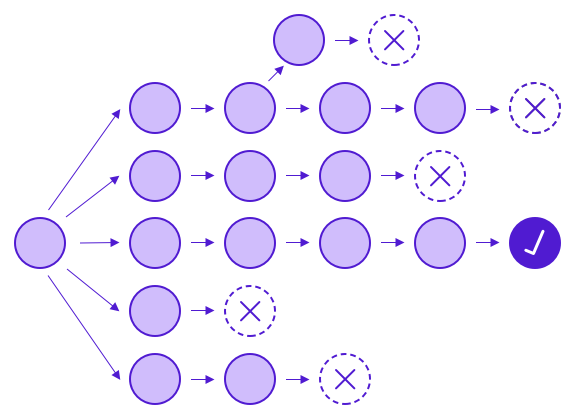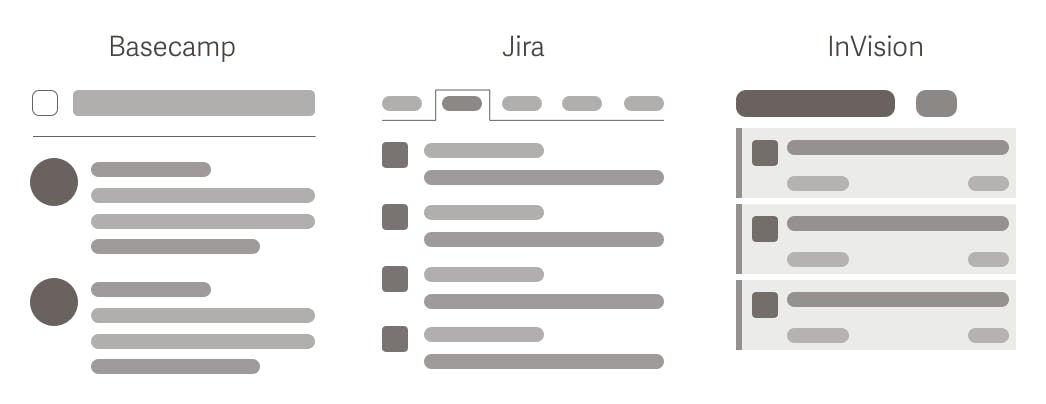Here’s something I’ve been mulling over the past few weeks.
If you work on digital products, you probably use a project management tool to keep track of design and development. Maybe your organization is all-in on JIRA or Basecamp, or you use something more lightweight like Trello or Flow. (At DOBT, we use a combination of Github issues and Slack integrations.)
You’ll notice that all of these tools make use of a linear timeline, whether they’re activity feeds or comment threads.
A linear discussion is great for convergent thinking. The project lead creates a new ticket for a feature, or a bug, or a customer request. The team debates how to move forward over the course of the thread. Maybe someone posts a mockup or a link to a prototype, and there’s a back-and-forth as colleagues give feedback. Eventually, you all come to a shared understanding around the solution you’re going to build.
It’s convenient to mold your design process to fit the tools you use. In the scenario above, your process looks like this:

But this way of working skips over a crucial portion of the design process: brainstorming and ideation, also known as divergent thinking. Once you understand the problem you’re trying to solve, you must uncover all the options you can choose from before converging upon the best solution. This means you need the space to think creatively.
Really, a solid design process looks like this:

Your team is doing the work to brainstorm many possible solutions. And instead of immediately rejecting ideas that seem silly upon first glance, you iterate upon them until you can evaluate the strongest possible version of a concept.
If you’re a small team located in the same room, you can just use a shared whiteboard to hash out new ideas. But if you work on a large or distributed team, or you simply have multiple stakeholders located in different offices, this becomes a bit more difficult.
How might we adapt our tools (or build new ones) to enable a more creative process?
Originally written for the DOBT blog.
